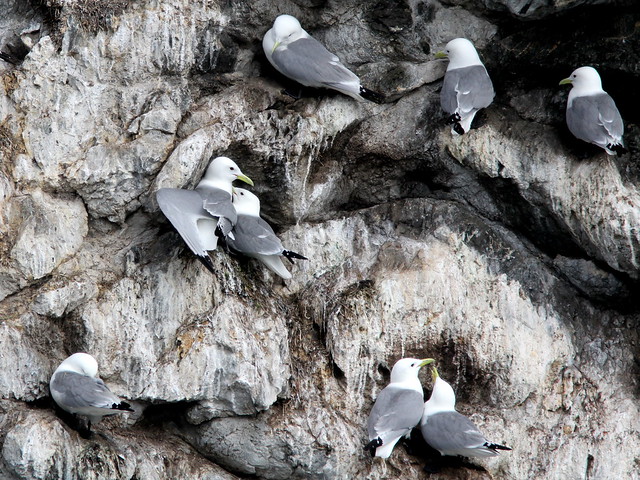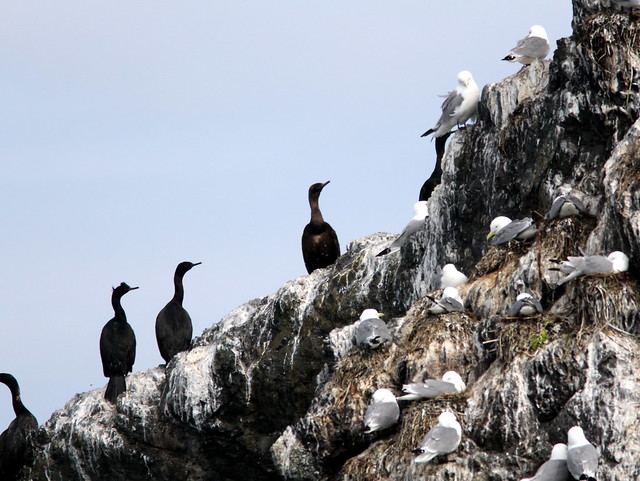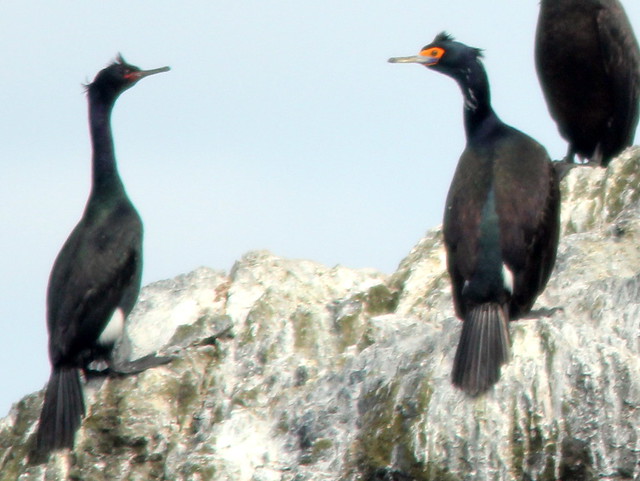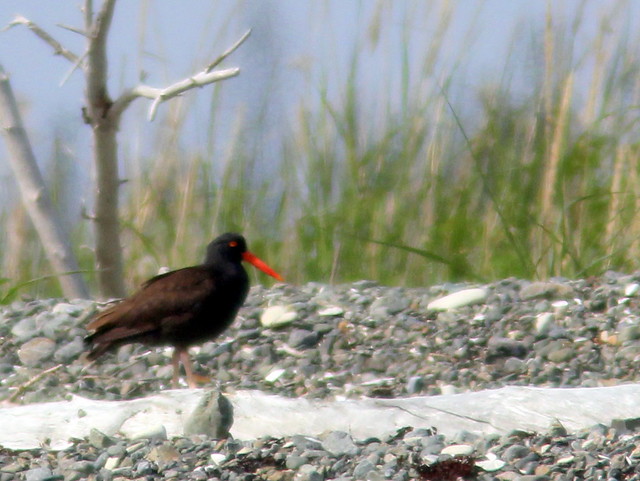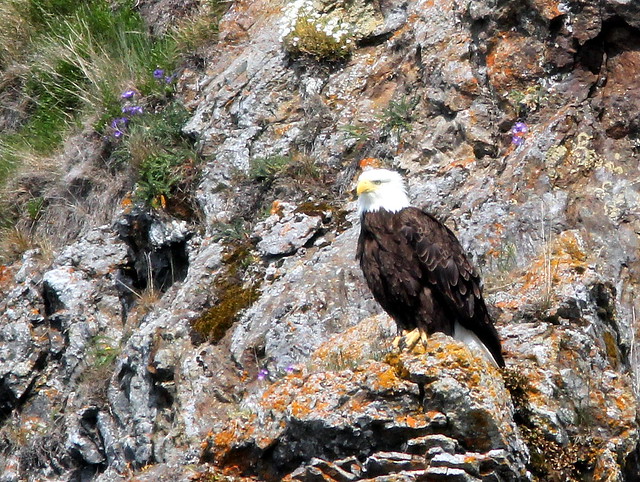After reading my past three blogs about our Alaska trip, our son-in-law, who accompanied Mary Lou and me in the 32-foot RV with our daughter and their two children, was only half-joking when he commented that I wrote volumes about the birds, but only a few lines about my loving family! The truth is, we spent much more time having fun together than we did looking for birds. But my blog is usually about birding and photography, and when it isn’t, I publish a disclaimer.
The sport of birding is compatible with almost anything we do where there are birds to be seen. Birding adds interest to any outdoor activity, as birds provide such readily visible evidence of the beauty and mystery of the world beyond the confines of house and home. This is a continuation of the narrative of our Alaska journey, which begins at this link.
“Birding is a fascinating, exciting, challenging game. It requires and encourages ever-growing skill. It may involve us in great adventures and wide travel, sometimes in difficult terrain. Seeking new birds to check off on our life lists may draw us further into the lives of these birds, challenging us to learn more about their life cycles, their behaviors, and ecology; and as our ecological perspectives expand, we may be stimulated to become more involved in conservation work, to protect the habitats of the many species we enjoy.” (Burton S. Guttman, Birding, February 2004)
The route from Soldotna to Homer was direct and only about 75 miles. Approaching from the bluffs north of the city, we could see Homer Spit arching out into Kechimak Bay. Our objective was Heritage RV Park, which turned out to be a very nice place for our two-night stay.
We parked the RV in a slot that was right on the edge of the gravel beach, with magnificent views of snow-covered mountains across the water and along the shore to the north. 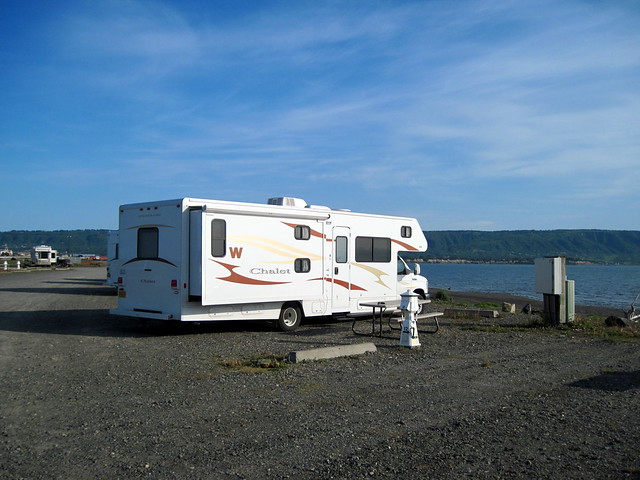
The tide was almost all the way out, and our granddaughters wasted no time getting out to explore the tidal pools and collect shells. 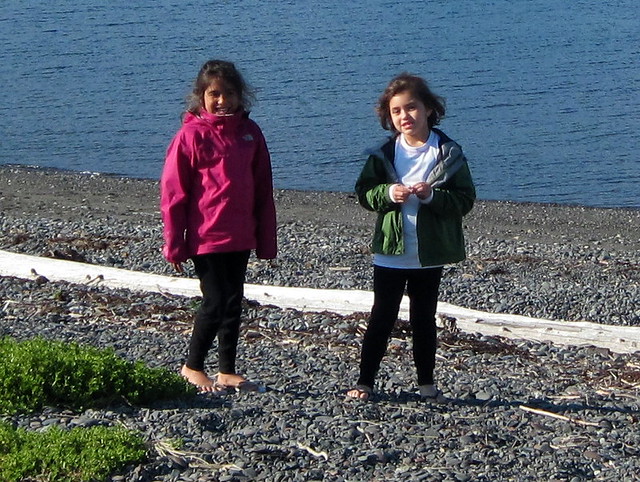
Bald Eagles were much in evidence. For thirty years, until her death in 2009, Jean Keene, the “Eagle Lady of Homer Spit” fed them during the winter with surplus and freezer burned fish from the seafood processing plant where she worked, attracting over 200 eagles at a time to her campground on the Spit. An ordinance banning the feeding was about to go into effect during Jean’s terminal illness, but its implementation was delayed until after her death. (Link to “Eagle Lady” video, which also shows views from Homer Spit)
Now the eagles keep watch as fishermen return to clean their catch, competing with the gulls for a few scraps.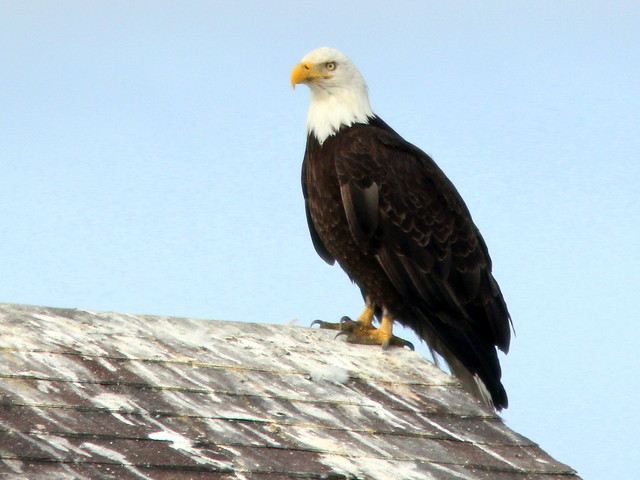
The next day we took a wildlife watching cruise of Katchimak Bay, and visited the seabird colony on Gull Island:
As we approached Gull Island we encountered huge flocks of Common Murres: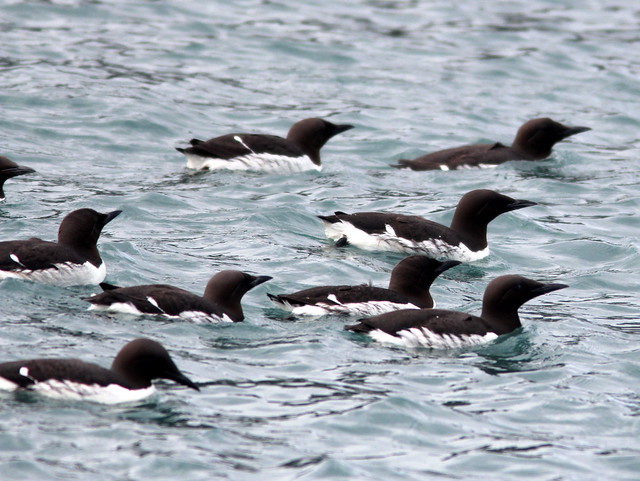
A pair of Pigeon Guillemots appeared to be having a disagreement: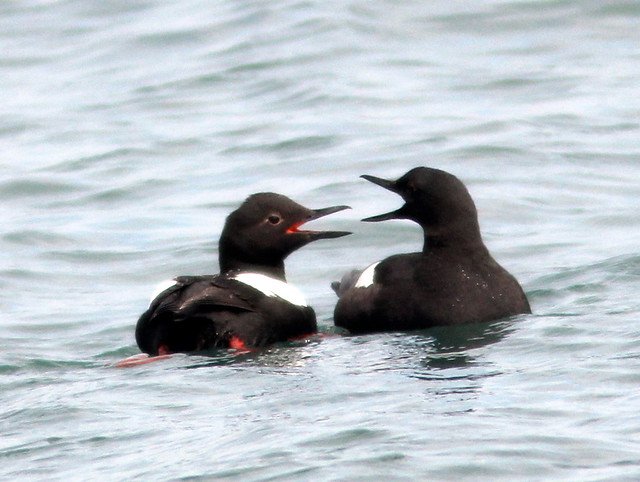
Pelagic Cormorants carried nesting material towards the island:
Several Tufted Puffins exhibited striking colors and patterns: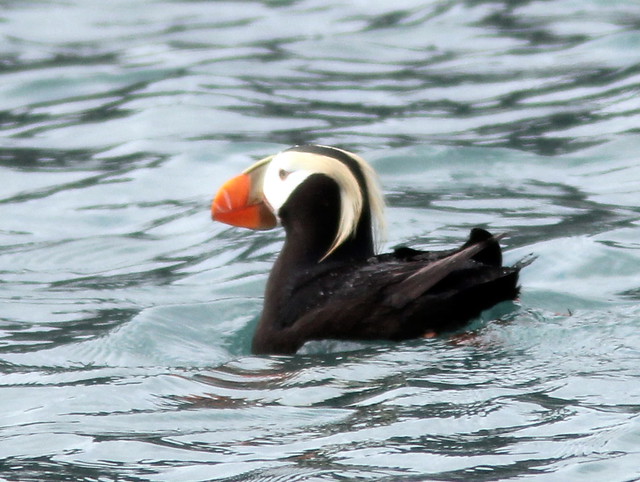
Black-legged Kittiwakes competed for nesting space on the cliffs:
A pair of kittiwakes share a tender moment. Note their bright greenish bills: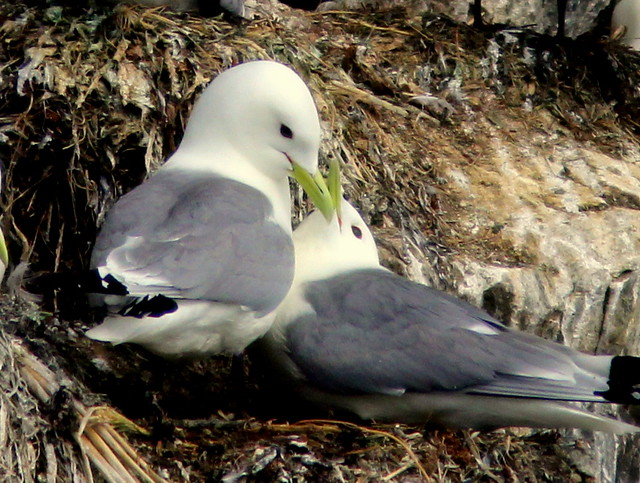
Groups of murres nested among the kittiwakes, as a larger Glacous-winged Gull looks on: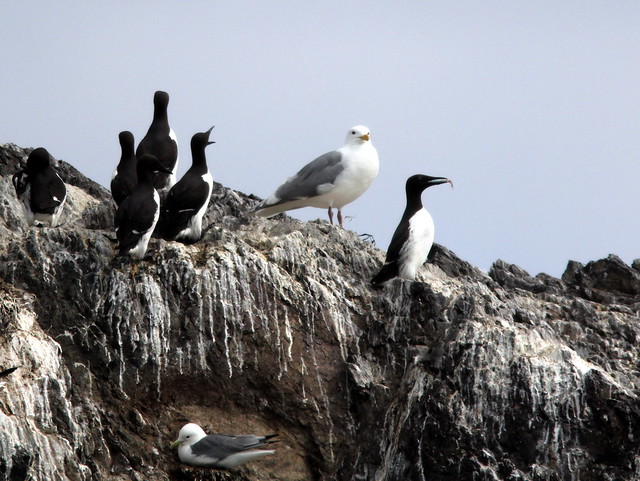
Cormorants also occupied sections of the rock cliffs of Gull Island:
I found two Red-faced Cormorants roosting on Gull Island, distinguished from the numerous smaller Pelagic Cormorants by their larger head with two tufts of feathers, and the more extensive red facial patch that extends across their forehead.
While all the other seabirds were the first of each species I had ever photographed, the Red-faced Cormorant was the first sighting of this species for Mary Lou and me (respectively our life list numbers 508 and 578 in the ABA North American area):
A distant Black Oystercatcher was tending a chick that was hidden by the rocky berm behind it:
Our seven-year old granddaughter counted 17 Bald Eagles during the cruise. This one roosted on a cliff face amid colorful lichens and wildflowers:
We saw many Sea Otters; this one is striking the clam on its belly with a rock held in its fists:
A rather large youngster slept on its mother’s belly: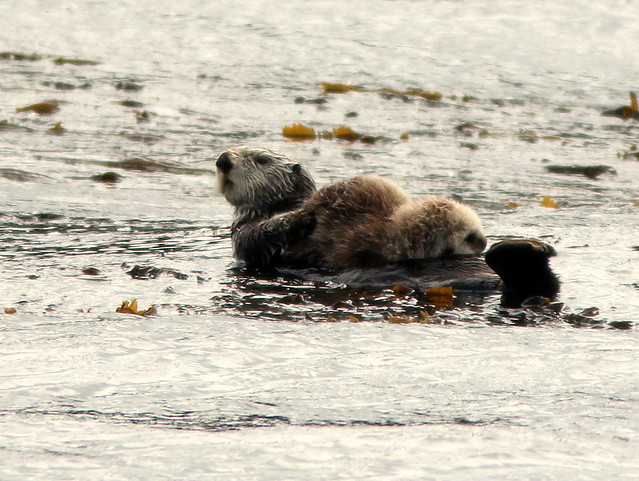
We had lunch and a pleasant walk through the remote city of Seldovia (population 286), known for its chain-saw art. This ornate carving is at the mouth of the harbor: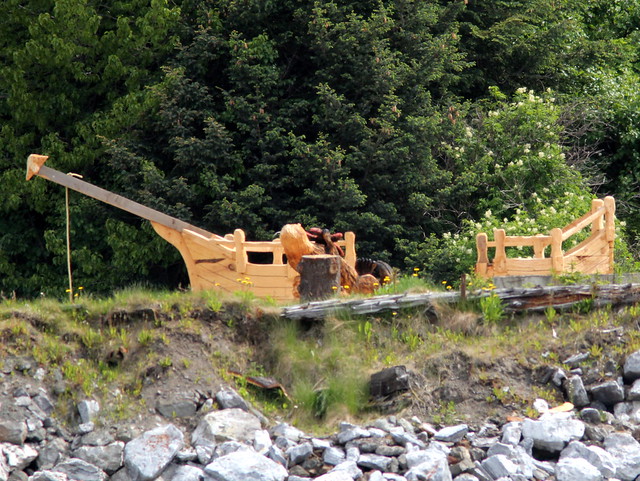
We spent the last three nights of our Alaska RV adventure in Seward.














